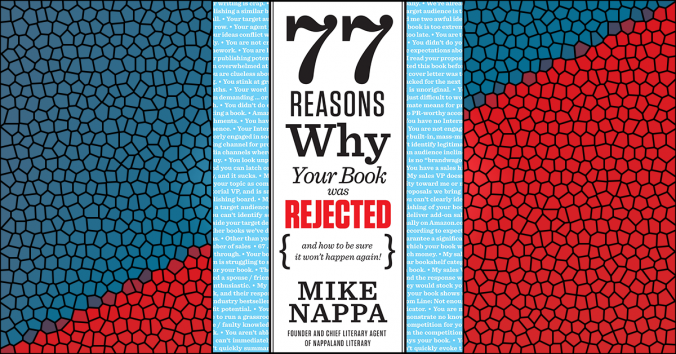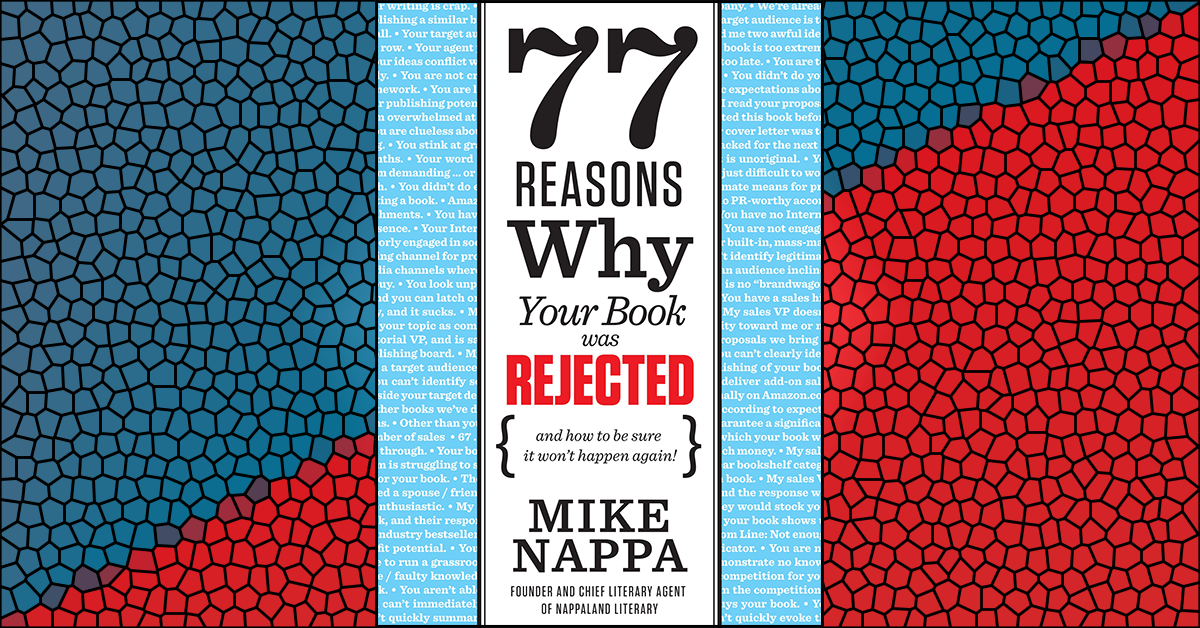A Marketing Team reason for rejection
I’m going to tell you two secrets now.
The first is an industry secret that you should know so you can take advantage of it. The second is a personal secret that I think will help illustrate the industry secret for you.
First, as a professional marketing copywriter, whenever I’m tasked with writing back cover or catalog copy for a book, I always ask for two things: The introduction and table of contents. Give me that, and I can make any back cover sing. In fact, we copywriters will often pull exact phrases from your introduction and use them in everything from back cover copy to catalog copy to press release copy and more.
The second secret is this: When I wrote the introduction to this book, I made sure to keep my future Marketing VP in mind. In fact, after I had everything ready to show a publisher, I actually took significant portions of my introduction and adapted them into a mock-up of back cover text. I was hoping my editor would use that material to show his team how easy it would be to create marketing copy for this book—so easy, in fact, a good bit of their work had already been done for them. [Editor’s note: It worked.]
I knew that any Marketing VP would view my writing through the lens of the requirements of his or her job. Since I wanted to enlist that person’s approval, it fell to me to show that I could give an introduction that would be minable for any and every copywriter who might be assigned my book.
Ah, but what if my introduction had been boring? Or blathering? Or simply not benefit-oriented? What if my intro didn’t clearly show the reader how he or she would gain from digging into the rest of this book?
The answer would be easy: rejection.
This actually applies to both fiction and nonfiction alike. In fact, sometimes in fiction a strong opening to your book is even more important. “I spend a lot of time trying to hook the reader in the first paragraph,” says mega-bestselling author John Grisham, “even in the first sentence.”
One last example. Today I find myself forced to write a rejection letter to a new author that I actually wanted to accept. I love her book concept. I like her credentials, and the information she has to present. I even get a kick out of her title package.
But then I read her introduction.
Despite all she has going for her, this author simply doesn’t know how to craft an intro that draws the reader into the book to come. She views the introduction as a place to distribute facts instead of as an opportunity to create interest. Thus, there’s nothing in here that a marketing copywriter can eventually use to promote her book. And that means a Marketing VP is going to frown when (if) she reads it.
I know I could teach this author how to write a winning book introduction…but I just don’t have the time. So today, against my own wishes, I’m going to reject her book.
Let’s make that a lesson for us all.
What You Can Do About It
1. Give your introduction proper attention.
Some authors view an introduction as almost a “throwaway” element in their books. “Nobody reads those things, anyway,” they tell me. “And besides, I want people to get into the meat of my book, not waste time in up-front materials.”
That kind of viewpoint is both shortsighted and inadequate. The truth is, most potential buyers will judge whether or not to pay out for your book by what they find in the introduction. As such, this section deserves your deliberate attention. Never simply “throw together” an intro after you’ve written the later chapters in your book. And never rush through the intro on your way to writing the rest of the book.
A good rule of thumb is to write your introduction at least twice: Once before you write the rest of the book, and then again after you’ve finished the manuscript for the rest of the book. Doing that not only helps your eventual reader, it also helps your book to make the right impression on my Marketing VP.
2. Understand that an introduction is different from any other chapter in your book.
Another mistake that newer authors make is assuming that an introduction is just another chapter in the larger book. Nothing could be further from the truth. For starters, in the typical book, the introduction shouldn’t be longer than ½ the length of a normal chapter of the book. (There are exceptions to this rule—this book included!) Additionally, the introduction should function not so much as a funnel for information, but as a map for relevant information as it relates to the book.
Most importantly, though, the primary purpose of your introduction should be this: To create legitimate interest in the rest of the book. Anything else can be deferred to later, if necessary. So when writing your introduction, make absolutely sure it captures the curiosity of your reader right up front.
3. Think like a copywriter.
You must remember that people like me are going to be mining your introduction for compelling phrases and descriptive markers to use in our advertising efforts for your book—including your book’s back cover. If you give me tools I can use to market your book, you’re going to get the attention of my Marketing VP pretty quickly. After all, he’s already looking for those little gems in your manuscript. If he finds them there, he’ll quickly recognize that he’s got a potential treasure in his hands.
So learn to think like a copywriter when working on your book’s introduction. It’s a different way of writing that requires a different way of thinking, but if you can master that talent you’ll greatly enhance your chances of success in the publishing business. See Robert Bly’s excellent work, The Copywriter’s Handbook, for more on this task.
Looking for more? Check out these links:








